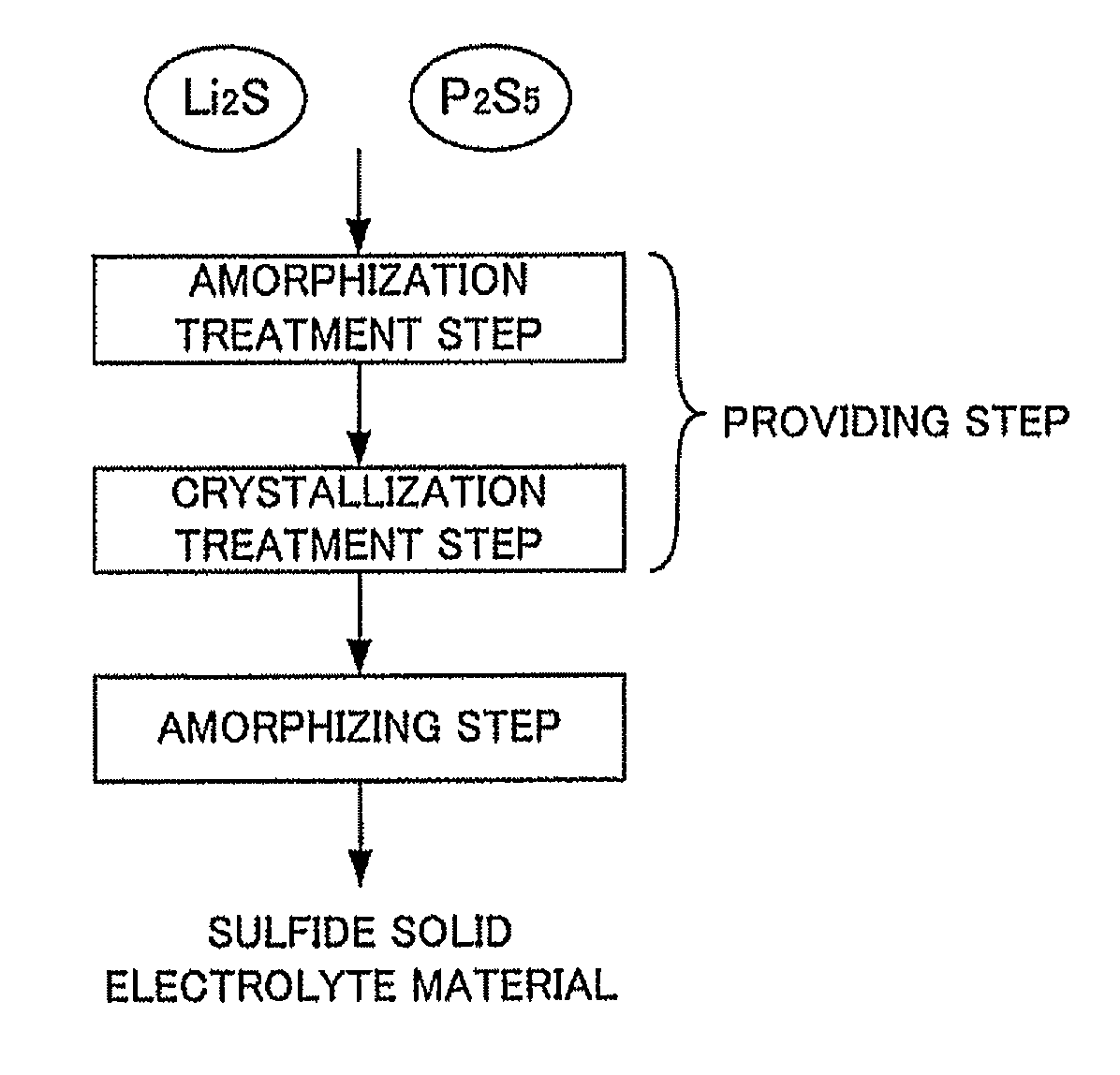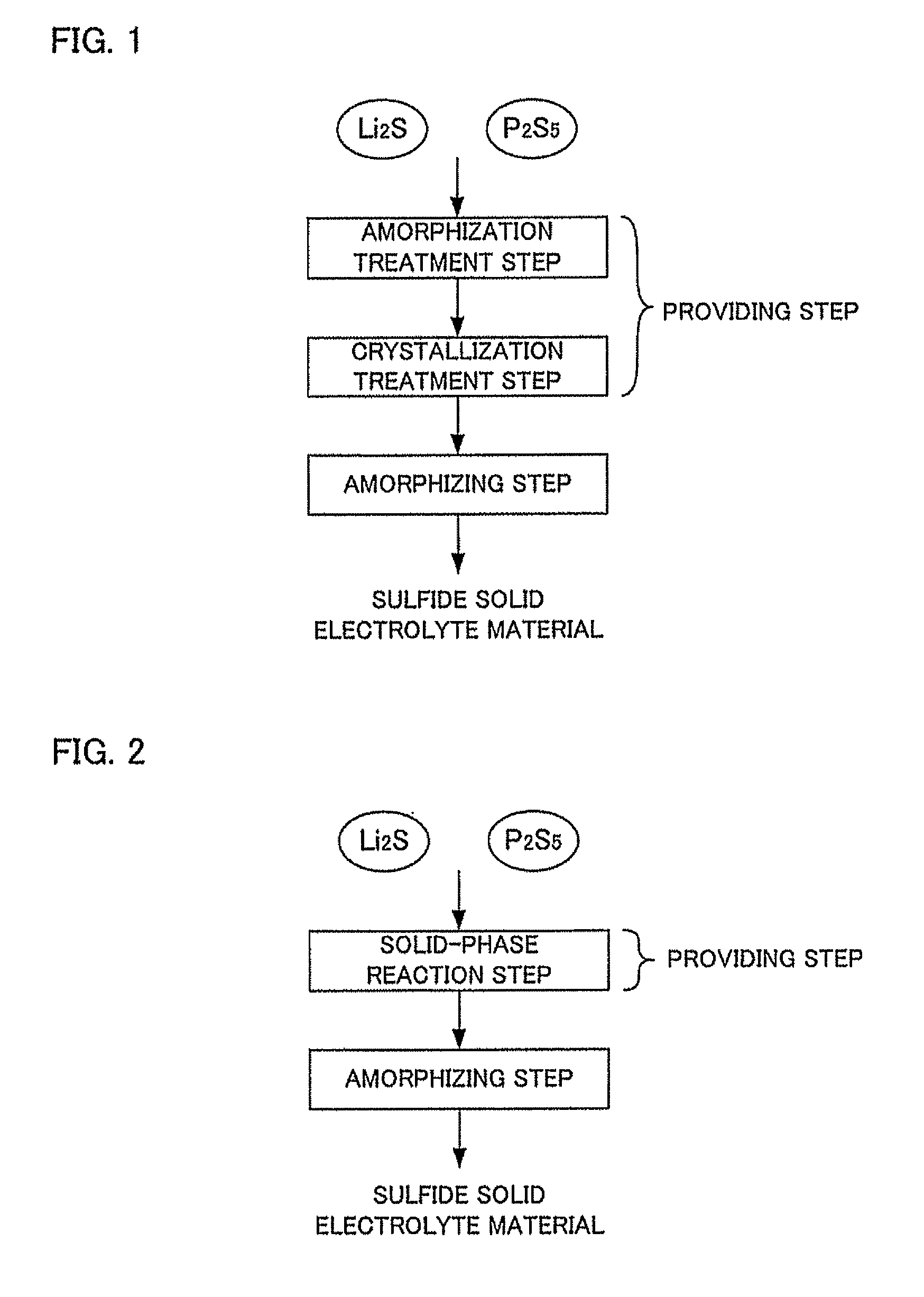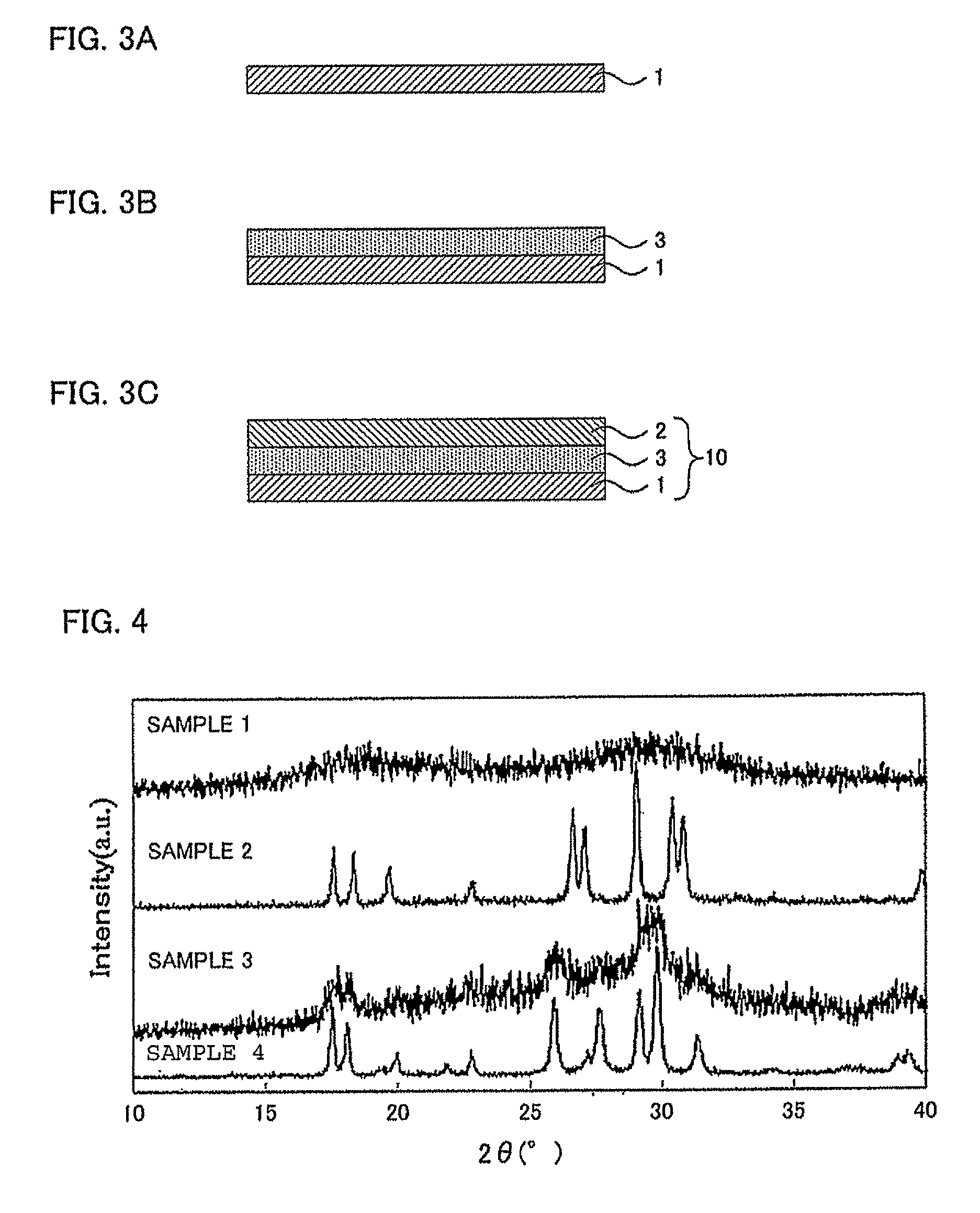Method for producing sulfide solid electrolyte material and method for producing lithium solid state battery
a solid electrolyte and lithium-ion battery technology, applied in sustainable manufacturing/processing, non-aqueous electrolyte cells, cell components, etc., to achieve the effect of high li ion conductivity
- Summary
- Abstract
- Description
- Claims
- Application Information
AI Technical Summary
Benefits of technology
Problems solved by technology
Method used
Image
Examples
first embodiment
(1) First Embodiment
[0033]The first embodiment of the providing step of the present invention comprises steps of: an amorphization treatment step for applying amorphization treatment to the above raw material composition and obtaining an amorphized sulfide solid electrolyte material, and a crystallization treatment step for applying crystallization treatment by heat treatment to the amorphized sulfide solid electrolyte material and obtaining the crystallized sulfide solid electrolyte material.
(I) Amorphization Treatment Step
[0034]In the amorphization treatment step in the first embodiment, the amorphization treatment is applied to the raw material composition, and an amorphized sulfide solid electrolyte material is obtained.
[0035]The raw material composition in the first embodiment contains at least Li2S and P2S5. The raw material composition may contain only Li2S and P2S5 or may further contain other raw materials. It is preferable that Li2S contained in the raw material compositio...
second embodiment
(2) Second Embodiment
[0050]The second embodiment of the providing step of the present invention comprises a solid-phase reaction step for producing a solid phase reaction by heat treatment in the raw material composition and obtaining the crystallized sulfide solid electrolyte material.
[0051]The raw material composition in the second embodiment contains at least Li2S and P2S5. The raw material composition may contain only Li2S and P2S5 or may further contain other raw materials. Since all features of the raw material composition are similar to those described in “(1) First Embodiment” described above, the description here will be omitted.
[0052]The Li2S residual amount (residual concentration) can be determined by XPS measurement and NMR measurement similarly to above. The Li2S residual amount of the crystallized sulfide solid electrolyte material is preferably not more than 3 mol %, for example, and more preferably not more than 1 mol %. Particularly when the Li2S residual amount is...
example 1
[0082]As a starting material, lithium sulfide (Li2S) and phosphorus pentasulfide (P2S5) were used. Those powders were weighed in a glove box under an Ar atmosphere (dew point −70° C.) so that the molar ratio was 75Li2S.25P2S5 and mixed in an agate mortar, and 1 g of a raw material composition (Li2S=0.3827 g and P2S5=0.6173 g) was obtained. Then, 1 g of the obtained raw material composition was introduced into a zirconia pot of 45 ml, ten zirconia balls (φ10 mm) were further introduced, and the pot was completely sealed (Ar atmosphere). The pot was attached to a planetary ball mill machine (P7™ manufactured by Fritsch Japan Co., Ltd.), mechanical milling was performed at a weighing table rotation number of 370 rpm for 40 hours, and an amorphized sulfide solid electrolyte material (sample 1) was obtained.
[0083]After that, the sample 1 was put in a carbon crucible equipped in a quartz tube under an Ar atmosphere, and the quartz tube was vacuum-sealed. The internal pressure of the quart...
PUM
| Property | Measurement | Unit |
|---|---|---|
| temperature | aaaaa | aaaaa |
| processing time | aaaaa | aaaaa |
| processing time | aaaaa | aaaaa |
Abstract
Description
Claims
Application Information
 Login to View More
Login to View More - R&D
- Intellectual Property
- Life Sciences
- Materials
- Tech Scout
- Unparalleled Data Quality
- Higher Quality Content
- 60% Fewer Hallucinations
Browse by: Latest US Patents, China's latest patents, Technical Efficacy Thesaurus, Application Domain, Technology Topic, Popular Technical Reports.
© 2025 PatSnap. All rights reserved.Legal|Privacy policy|Modern Slavery Act Transparency Statement|Sitemap|About US| Contact US: help@patsnap.com



